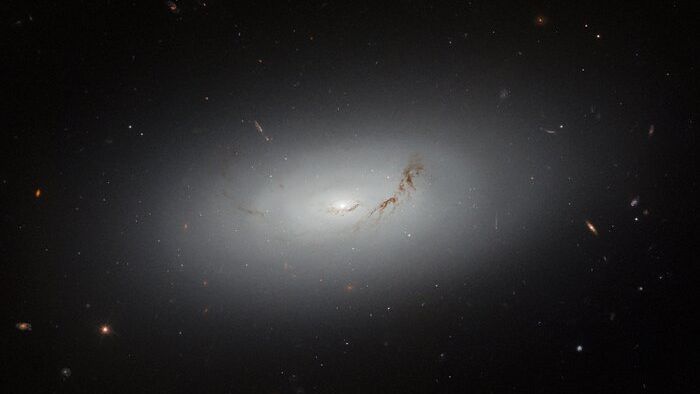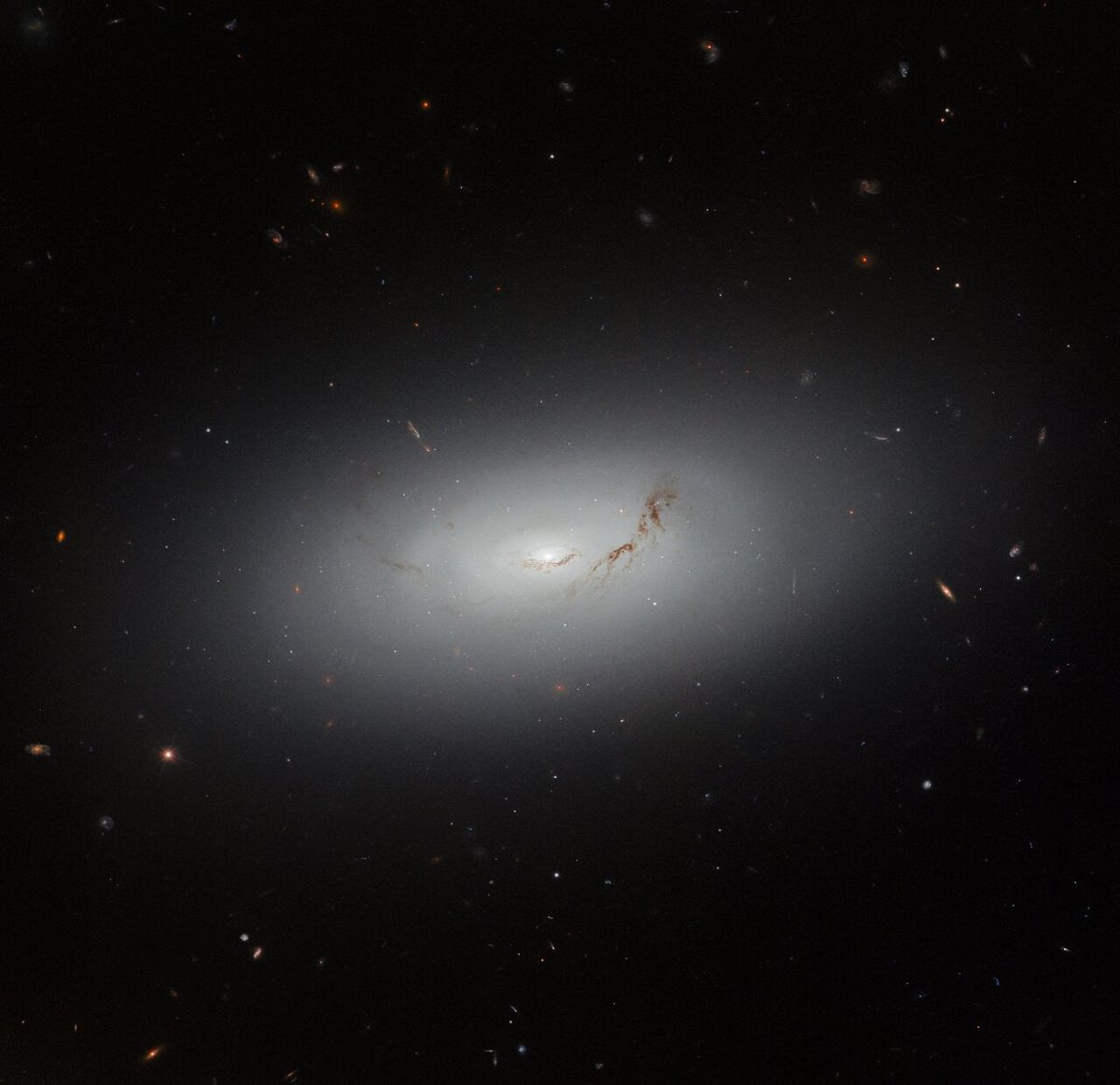Science
Related: About this forumHubble telescope spots glowing galactic disk floating in deep space (photo)
By Samantha Mathewson published 1 day ago
It lives in a constellation named for an 18th century astronomical tool.

a glowing with galaxy hangs center amongst small, distant dots, which are also galaxies.
Faint concentric ovals appear progressively brighter towards the center of the galaxy NGC 3156. (Image credit: ESA/Hubble & NASA, R. Sharples, S. Kaviraj, W. Keel)
A mesmerizing new photo from the Hubble Space Telescope captures the hazy glow of a distant galaxy.
The galaxy, known as NGC 3156, is located about 73 million light-years from Earth in the Sextans constellation. It is categorized as a lenticular galaxy, which is a cross between a spiral and an elliptical galaxy as it boasts a bright central bulge but no distinct twisting arms. Lenticular galaxies are also believed to have either used up or lost most of their interstellar matter, which suggests they are home to older stellar populations.
In the recent photo of NGC 3156, faint concentric ovals appear progressively brighter towards the core when compared to faded edges of the galaxy. Two threads of dark red interstellar dust cut across the galaxy’s disk, circling its central bulge. Relatively few cosmic neighbors are captured in the surrounding area of space.
The Sextans constellation occupies a sparse, relatively dark area of the sky. It is a minor equatorial constellation that belongs to the Hercules family of constellations, and is named after the astronomical tool used to measure the angular distance between two visible objects in the sky.
"Sextants are often thought of as navigational instruments that were invented in the 18th century. However, the sextant as an astronomical tool has been around for much longer than that: Islamic scholars developed astronomical sextants many hundreds of years earlier in order to measure angles in the sky," European Space Agency (ESA) officials said in a statement releasing the new Hubble photo of NGC 3156.

Faint concentric ovals appear progressively brighter towards the center of the galaxy NGC 3156 in this full size photo from the Hubble Space Telescope. Two threads of dark red interstellar dust can also be seen near the galaxy’s central bulge. (Image credit: ESA/Hubble & NASA, R. Sharples, S. Kaviraj, W. Keel)
More:
https://www.space.com/great-galactic-disk-hubble-photo
Lovie777
(15,006 posts)2naSalit
(92,695 posts)Amaryllis
(9,809 posts)with life forms?
Lochloosa
(16,401 posts)BWdem4life
(2,466 posts)I guess maybe if you were entering a black hole that might count as sinking.
![]()
dweller
(25,050 posts)Cosmic Frisbee
😀
✌🏻